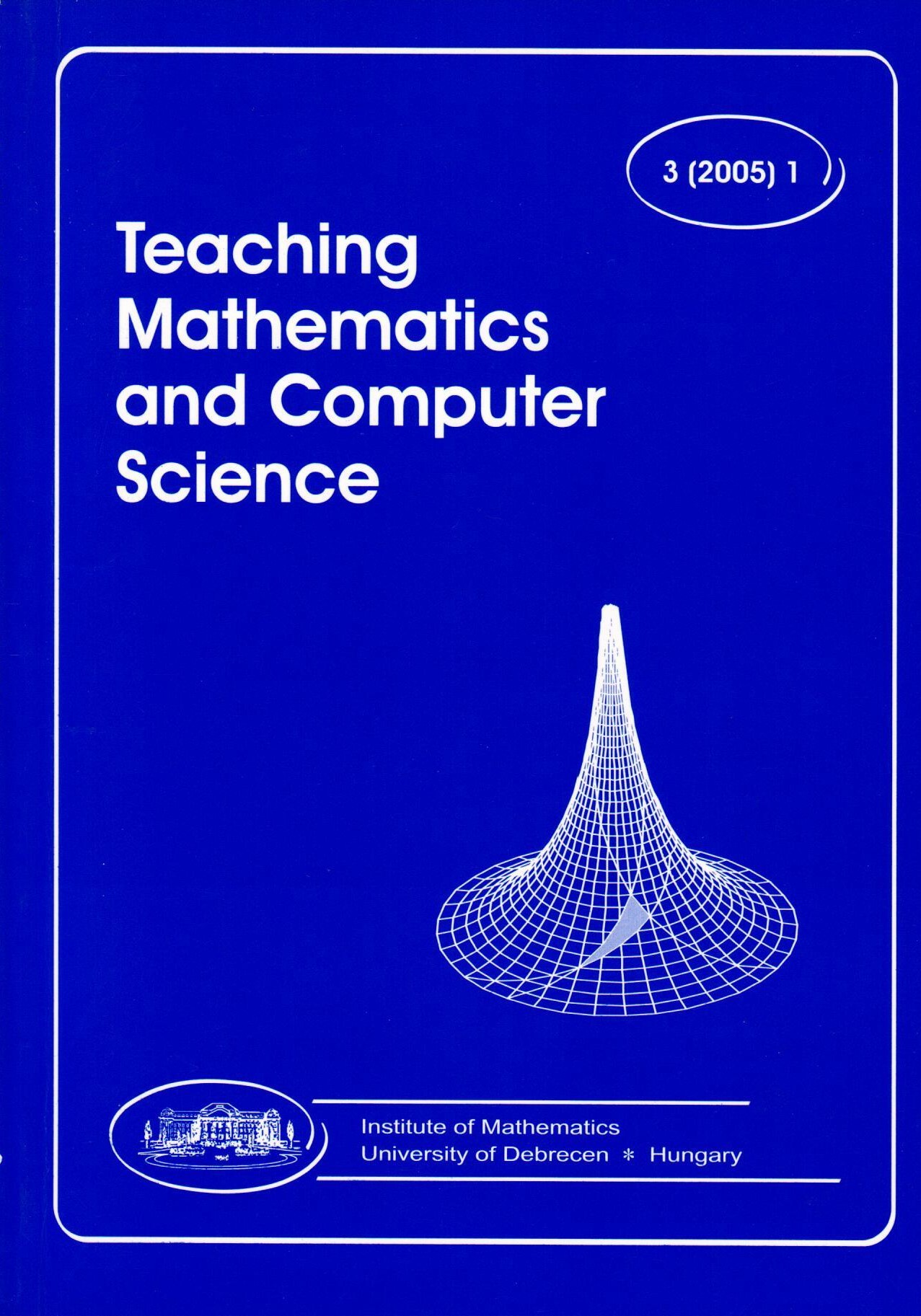Vol. 3 No. 1 (2005)
Published
2005 June 1
##issue.tableOfContents##
Articles
-
Über den Vergleich des mathematischen bzw. mathematikdidaktischen Vektorbegriffs durch den Galois-Graphen
1-12Views:127In this article we show how to apply the method of Galois-graph – one of the means of the formal concept-analysis in order to coordinate the mathematical and didactical requirements. As an example we have chosen the concept of the "vector". As a result of the analysis it is proved that, in elaborating the right vector concept the geometric and algebraic foundations are both needed. The analysis also points out that the geometric model, based on the concept of the "directed segment" is unnecessarily overemphasized in the East-European education.PDF (German)41 -
Comparative survey on pupils' beliefs of mathematics teaching in Finland and Ukraine
13-33Views:84The focus of this comparative survey was the following research question: What are the differences and similarities in pupils' beliefs in mathematics between Finland and Ukraine? Data were gathered with the help of a questionnaire. The questionnaire consists of 32 structured statements about mathematics teaching for which the pupils were asked to rate their beliefs on a 5-step scale. The Finnish sample comprised 255 pupils, and the Ukrainian sample 200 pupils. Our data has been gathered with a non-probabilistic convenience sampling.
The main results of our survey are, as follows: Generally, pupils' beliefs of mathematics teaching and learning in Finland and Ukraine are rather far from similar. An investigation of the differences between pupils' answers across the two countries also showed beliefs that are characteristic for each country. For pupils in Finland, the characteristic beliefs seem to be, as follows: the value of strict discipline, working in small groups, and the idea that all understand. For pupils in Ukraine, the most characteristic might be the following beliefs: the use of learning games, the emphases of mathematical concepts, and teachers' explanations.PDF34 -
The mathematics textbook as an aid to differentiation: a first Hungarian example
35-53Views:92Differentiation is a way of teaching where each student is taught according to his/her personal needs. This technique is not widely used in Hungary yet, although this would be necessary due to the introduction of the two-level final examination and to a growing concern for equal opportunities and integrated teaching. One of the most significant aids to differentiation is an appropriate textbook, and that is why a group of professionals wrote a set of textbooks that supports this technique. The paper examines the requirements for a differentiated textbook, and the extent to which the textbook in question meets them.PDF77 -
The "Teaching Mathematics and Computer Science" Journal logo's mathematical background
55-65Views:59In the present contribution we give an elementary technology for drawing the geodesics, paracycles and hypercycles on the pseudosphere.PDF30 -
Mathematische Bildung im Klagenfurter Doktorand(inn)enkolleg
67-84Views:91In 2003 we set up a programme for PhD-studies ("Doktorand(inn)enkolleg") at the University of Klagenfurt which should promote and support PhD-studies in the field of mathematics education.Within this programme it is worked on the topic "general mathematics education" from different perspectives.
In the first part of this paper intentions, the fields of work and the form of organisation are briefly demonstrated. The second and main part considers in detail the work in one of the four fields of work, and finally, the third and last part presents some experiences with regard to the contents as well as general ones.PDF (German)27 -
Metadata formats and the new markup language from library field
85-102Views:92Using new communication technologies libraries must face continuously new questions, possibilities and expectations. This study discusses some library-related aspects of our electronic era and how computer-related data formats affect bibliographic dataprocessing to give a survey of the most important results.
Altough library systems have been supporting the creation and maintenance of MARC records for decades, the need to create other forms of metadata is relatively new. In higher education it is important that students get acquainted with these new aspects of bibliographic description and bibliographic dataprocessing.
In our department I launched the BDML development project in order to standardize bibliographic description (based on Hungarian standard 3424/1) with the help of XML. The development aims at the creation of a set of standards that provides information about the structure of bibliographic description in XML form. In the second part of the paper I give a brief presentation and summary of BDML.PDF36 -
An evaluating tool for programming contests
103-119Views:93Students of the University of Debrecen majoring in informatics have been participating in regional ACM international collegiate programming contests since 1995. In earlier times arrangement of the local rounds was difficult because we had to check the contestants' submissions by hand. Beyond the discomfort, this hindered the efficient work of the jury and involved a number of possibilities of making mistakes.
The Programming Contest Result Manager (PCRM) program developed in the past two years provides a solution to the above problems. The program automates the evaluation of submissions and provides both the jury and the contestants with a user interface. This application can help the jury not only in ACM type but also in other kinds of practical programming contests.PDF49
Keywords
Issues by Year
2020
2017
2011
2010
2009
2007
2006
2005
2004
2003







